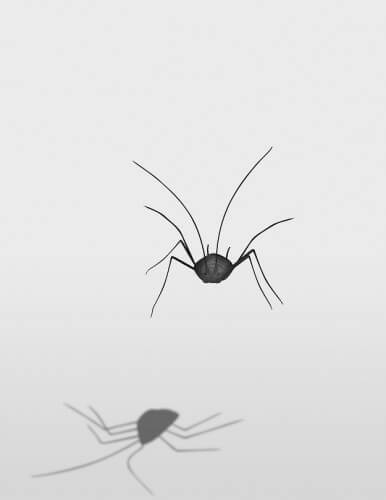Researchers from the Technion and Haifa University found that leaf aphids also almost always fall on legs

In a joint and multidisciplinary study conducted by researchers from the University of Haifa (Dr. Moshe Gish and Professor Moshe Inbar from the Department of Evolutionary and Environmental Biology) and the Technion (Dr. Gal Rybak and Research Professor Daniel Weiss from the Faculty of Aeronautics and Space Engineering, and the Program for Autonomous Systems) it was found that leaf aphids that escape danger by Falling from the host plant, they are able to flip over in the air and almost always land on their feet. The study describing the aerodynamic mechanism and the ecological significance of the phenomenon was published in the journal Current Biology.
Leaf aphids are small insects that develop in colonies on plants. Aphids feed on plant fluids and many species are even harmful to agriculture. When aphids face the danger of predation, many times they choose to escape from the plant by falling towards the ground. The researchers found that immediately after an aphid leaves the plant, it performs a flipping maneuver in the air (in a manner similar to the aerial flipping performed by cats when falling), so that the landing is almost always carried out on the ventral side regardless of the position in which the fall began. Aphids that fell from their plant after an encounter with a predatory beetle (Moshit HaSheva - "Ladybug") landed on the ventral side in 95% of the cases when the fall was from a height of 20 centimeters, while when the fall was from lower heights, the ability to roll over in the air was only slightly impaired. Some of the aphids even managed to flip over during a short fall of a few centimeters. The researchers used extremely fast video cameras that recorded the course of the fall at a speed of over 1000 images per second, in order to identify the mechanism used by the aphids to perform the aerial inversion. It turns out that when the fall begins, the aphids raise their hind legs up and back (in relation to the body) and tilt their long tentacles forward, to create a permanent and typical falling position. The researchers created a mathematical model based on air resistance which showed that during the fall, when the aphid is in this characteristic position, the aerodynamic forces acting on the body parts (as a result of the air resistance) cause the aphid to rotate up to the point where aerodynamic stability is obtained which guarantees the continuation of the fall at a fixed angle, where the ventral and the feet face the ground. In fact, when the aphid's body is in the typical falling position, it constitutes a kind of aerodynamic "comfort-get-up", when any deviation from the stable position is immediately corrected by the air resistance, without the need for additional actions on the part of the aphid.
The researchers performed additional experiments in order to try and find out what is the advantage of landing on the ventral side for an aphid. The conclusion they reached is that landing on the ventral side is a condition for the aphid to be caught and remain on the leaves of the plant where it hits the ground. For an aphid, the soil is a very dangerous place where it is exposed to soil predators (such as ants), starvation and dehydration. The aphid does fall from the plant to escape danger, but it does everything it can to stay on lower parts of it to avoid reaching the ground after falling. From the analysis of the videos and the results of the experiments, it emerged that when an aphid lands on the ventral side, the adhesive pads at the ends of its legs come into contact with the surface of the leaf, thus allowing it to stick firmly and stop the further fall. However, when the aphid lands on its back or side, the adhesive pads do not come into contact with the surface and the aphid is splashed off the leaf and continues to fall towards the ground.
The aerial inversion mechanism is impressive in its simplicity and efficiency, since the aphid is not required to do anything except bring the legs and tentacles into the typical fall position. The aphid completes the inversion in a very short time - in less than two-tenths of a second, and the researchers explain that this is possible thanks to its tiny size (a few millimeters). At such tiny sizes, the fall speed of the aphid is relatively low and the viscosity of the air has a great influence on the aerodynamic forces acting on the body. The result is a rapid rotation of the body already in the first stages of the fall. Unlike cats, who due to their size have to perform complex maneuvers when falling in order to catch up and turn over in time, aphids let air resistance and gravity do the work for them.
The research emphasizes the importance of the plant to the aphids that develop on it: even when they must escape for fear of immediate predation, a mechanism has developed in them that allows them to stick to its lower parts and not leave it completely.
"A deeper understanding of the ways in which such a tiny, and especially wingless, creature manages to maneuver and stabilize itself in the air so efficiently can open the door to research and applications in the field of autonomous control," the researchers said.
